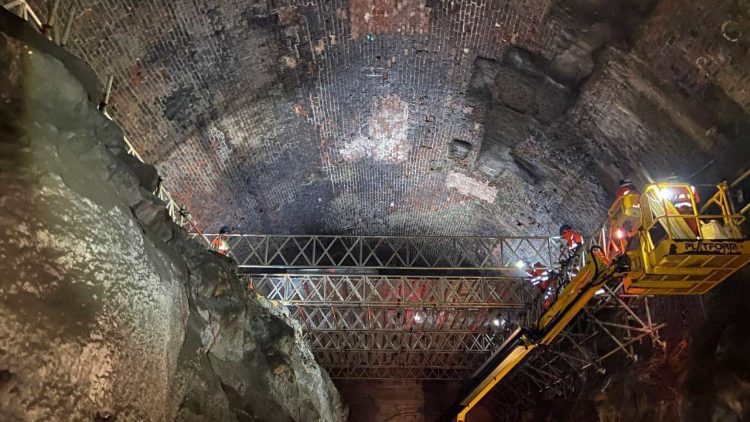For the last six months, Network Rail engineers have been using 21st-century technology to repair an underground tunnel in Liverpool city centre on a key section of the Merseyrail network without causing any disruption to passengers.
In a £3.5m investment, the roof of the High Neck Tunnel between Liverpool Central and Brunswick stations has been strengthened and waterproofed. The work will repair leaks and loose brickwork in the 130-year-old tunnel to ensure more reliable journeys for passengers between Southport and Hunts Cross. A steel ‘ram-arch' tension system was installed on the tunnel roof before being strengthened by spraying it with concrete that should last for the next 100 years.

Using computer-aided design (CAD), Network Rail developed a smart solution to keep trains running during the project. Specialist LiDAR laser surveys mapped every inch of the tunnel's interior to create the 3D computer model. The LiDAR system emits light from a rapidly firing laser like a strobe light, which travels to the ground and reflects off the tunnel walls. The reflected light energy then returns to the LiDAR sensor where it is recorded and the data is then used to build the 3D computer model.
After capturing the location of each uneven brick and lump of loose stonework, scaffolding teams built a large temporary platform – affectionately dubbed ‘the dance floor' – so workers would be safe high above the tracks whilst trains passed underneath. All of the data needed was recorded by using a rail-mounted cherry picker that drove through the tunnel during a single night shift.
The final phase of the project that started in 2017 will take place later this month when concrete is sprayed into the reinforced metalwork, with the underground upgrades expected to be finished by the end of this year. The entire length of the 125-metre-long tunnel will then have a reinforced concrete roof requiring next to no maintenance for decades to come.
Helen Little, Network Rail Works Delivery supervisor, said: “In the past, some previous repairs to High Neck Tunnel caused major disruption because accessing the tunnel ceiling is so difficult and the railway needed to be closed entirely. Building on similar repairs in 2017 – it was our priority this time to once again make sure we didn't disrupt present-day journeys while we fixed the structure for the future.
“It's been great to train up to install the ‘ram-arch' system ourselves and the team now has the skills to take this on to further work within Network Rail and save taxpayers' money. The CAD also improved efficiency because it's enabled us to plan the project right down to the last bolt – minimising materials being wasted.”
Zoe Hands, Merseyrail's chief operating officer, said: “We are pleased to work with our partners at Network Rail as they utilise cutting edge technology to ensure vital work on our network can be undertaken without impacting on the service we offer to our passengers. We hope to see more works of this nature undertaken in this way going forward, so that we can continue to offer the best possible train service to the people of the Liverpool City Region.”
Wow. That’s good. I was beginning to think NR had forgotten all about us.